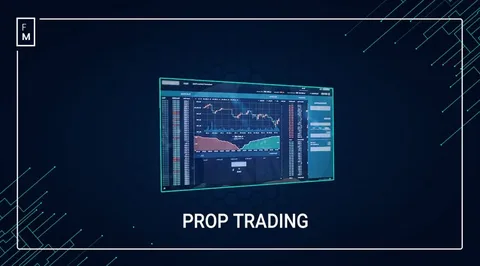If you’ve ever had experience trading futures, you already understand that the market open and close can be somewhat of a roller coaster ride. Volatility increases, spreads increase, and what appears to be a solid setup one moment can completely disappear the next. For prop firm traders, particularly those trading under strict rules and risk parameters, these are high-pressure moments. Risk management around futures markets open and close isn’t merely about keeping your account open—it’s about demonstrating to the firm that you are level-headed under pressure.
Let’s dissect why such times are so challenging, why prop firm regulations make them even more critical, and which strategies work to help you keep your edge. Whether you’re pursuing that instant funding futures prop firm account or already have a funded seat in your hands, knowledge of futures trading hours and their idiosyncrasies will simplify your life considerably.
Why the Open and Close Matter So Much in Futures
The futures market’s open and close aren’t like the middle of the trading day. They’re special creatures.
- The Open (say, 9:30 a.m. EST for futures based on equities such as the E-mini S&P 500): Here, overnight news, economic numbers releases, and whatever else had an influence on sentiment while you slept to catch up with you. Orders accumulate, liquidity pours into the book, and prices can blow in either direction with little notice.
- The Close (typically at 4:00 p.m. EST for stock index futures, although the extended sessions extend later): Here institutions close out positions, hedge funds rebalance, and day traders close out. Spreads will widen, liquidity will move, and markets at times whip back and forth as large players close out their business.
For a retail trader, this action may be thrilling. For a prop firm trader? It’s a test. Companies are observing the way you behave under it—do you freak out, overtrade, or freeze? Or do you get through it with discipline and calm?
Why Risk Management is Even More Important Here
When you’re trading your own money, you’ve only got yourself to answer to. Blow up your account? Painful, but that’s on you. At a prop firm, it’s different. You’re trading firm capital, and they’ve got strict rules designed to protect themselves.
Here are a few key reasons why managing risk during these times is so crucial in prop firms:
- Daily Drawdown Limits – Prop firms usually have strict daily loss limits. One bad trade on a volatile open can reach your limit and close your session before it starts.
- Consistency Rules – Most firms would like to see steady performance, not one day of fireworks and then a blowout. Being able to ride out the volatile opens and closes without blowing your account demonstrates steadiness.
- Evaluation Stages – If you’re still in a challenge or evaluation phase, these futures trading hours can make or break your pass. One emotional mistake at the close might undo weeks of careful trading.
- Instant Funding Futures Prop Firm Programs – With instant funding models, you don’t have the option of getting practice in a long evaluation. You’re live on day one. That makes risk control around the open and close even more important.
Bottom line: the firm isn’t seeking cowboys—they want traders who are willing to respect risk regardless of what the market serves up.
Common Risks Traders Face at Open and Close
Let’s take a closer look at the particular danger you’ll be exposed to during these windows:
- Slippage: You may think you’re getting filled at a certain price, but in rapid conditions, the fill may be worse than you expected.
- False Breakouts: Price may jump above a level at the opening, then recoil and stop anyone who pursued.
- Spread Widening: Especially into the close, spreads will widen, and it becomes more difficult to enter and exit without sacrificing ticks.
- Emotional Trading: Volatility will mess with your head. You notice large candles, and all of a sudden you think, “I can’t lose on this move,” even if it’s not in line with your strategy.
- News Events: Occasionally, there is significant economic news at the open. Combine that with the natural volatility, and you have fireworks.
Identifying those risks is step one. Step two is determining how to manage them without having a meltdown.
Methods to Control Risk at Market Open
Sit on Your Hands (Initially)
This title is dull, but the strategy is effective. Lots of experienced futures traders simply don’t trade the initial few minutes of the open. They allow the market to shake out, establish direction, and then seek out setups once things have settled down.
Scale Into Positions
Rather than using full size from the very beginning, scale in. Scaling in allows you to feel out the waters without putting on your max risk in the most hectic minutes.
Use Wider Stops (But Smaller Size)
The open will whip around a great deal. If you’re used to running a 5-tick stop, that could be gobbled up right away. Rather, expand your stop but reduce your position size. That way, you’re giving the trade room to breathe without exposing yourself to more than you’re used to.
Don’t Use Market Orders
In periods of high volatility, market orders can result in awful fills. Limit orders provide you with more authority at the expense of sometimes missing the move.
Monitor Order Flow
If your prop firm lets you utilize depth-of-market (DOM) tools, take a look at how orders are building. Big imbalances can provide insight into whether a move is sustainable or susceptible to reversal.


